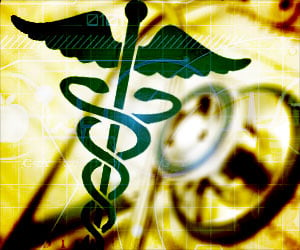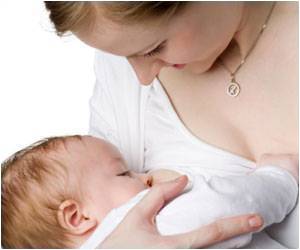On a wet and windy morning, Bhumisara Upadhyay, a Nepalese housewife, is out visiting pregnant women, on a mission to slash newborn deaths in the Himalayan nation with a simple tube of gel.

Health experts attribute Nepal's newborn mortality rate to infections contracted through the umbilical stump, which is traditionally coated with a mix of oil and turmeric after the cord is cut.
Instead, the volunteers persuade women to use a basic antiseptic gel which they distribute free of charge under an initiative launched three years ago with funding from the US development agency USAID.
Within a year of the launch, newborn deaths had declined by a dramatic 27 percent and organisers now plan to extend it nationwide over the next three years. "When I had my own children 20-25 years ago, babies would just die overnight, no one understood why... it was like living in a graveyard," Upadhyay, 42, told AFP in her home village of Badalamji, perched on a ridge in the remote midwest.
"We used to say it was good to have lots of babies, because half would die before they learnt to talk."
Married before puberty to a man 22 years her senior, Upadhyay was just 17 when she gave birth to her first child after enduring eight days of labour.
"Babies end up with life-threatening infections like neonatal tetanus thanks to these traditional practices," Sharma told AFP.
The gel, which only needs to be applied once to the stump, binds to the skin and dries in minutes. "The key thing is to apply it soon after birth, so it stays on the skin for the first 24 hours and protects babies when they are most vulnerable to infection," Sharma said.
Painstaking process
It sounds like a simple solution. But overturning traditional practices has been a major challenge.
Leela Khanal of US non-profit John Snow, Inc, which runs the programme, said many in Nepal's Muslim minority initially refused to use the gel, fearing it was a ploy to induce infertility among their young.
"It took us months to convince them that it would protect, not harm their children," Khanal told AFP.
The superstitions surrounding childbirth among some high-caste Hindu communities were another hurdle. Each of the four times Upadhyay gave birth, she and the newborn were confined to an outhouse for 11 days until a priest arrived to "purify" mother and child.
"No one was allowed to touch me because of the taboo. I washed my own clothes, I had to eat from separate utensils, do everything for the baby myself," she said.
Every morning, thousands of housewives like Upadhyay walk for hours, braving rain, extreme temperatures and the threat of landslides to visit pregnant women scattered across Nepal's steep slopes.
The volunteers are community health workers, a network the government established in 1988 to promote family planning. They teach pregnant women how to care for newborns, and hand out tubes of the gel so mothers can apply it themselves.
Sometimes they are forced to turn back if no one is home. Today, however, Upadhyay is in luck as she meets 20-year-old Mahisara Hamal, eight months pregnant with her first child.
She pulls a baby doll from her bag and shows the school dropout how to apply the gel before dropping off a sealed sample. It is a painstaking process, going from home to home, but one that is paying off, and Hamal cautiously agrees to use the medicine.
"Back home in my parents' village, many people still use turmeric and oil... it's what we have always done," Hamal says.
Upadhyay nods before making another pitch. "I know, I used to do it too, I didn't know any better... but you can avoid our mistakes and do the right thing for your child."
Source-AFP
 MEDINDIA
MEDINDIA




 Email
Email




